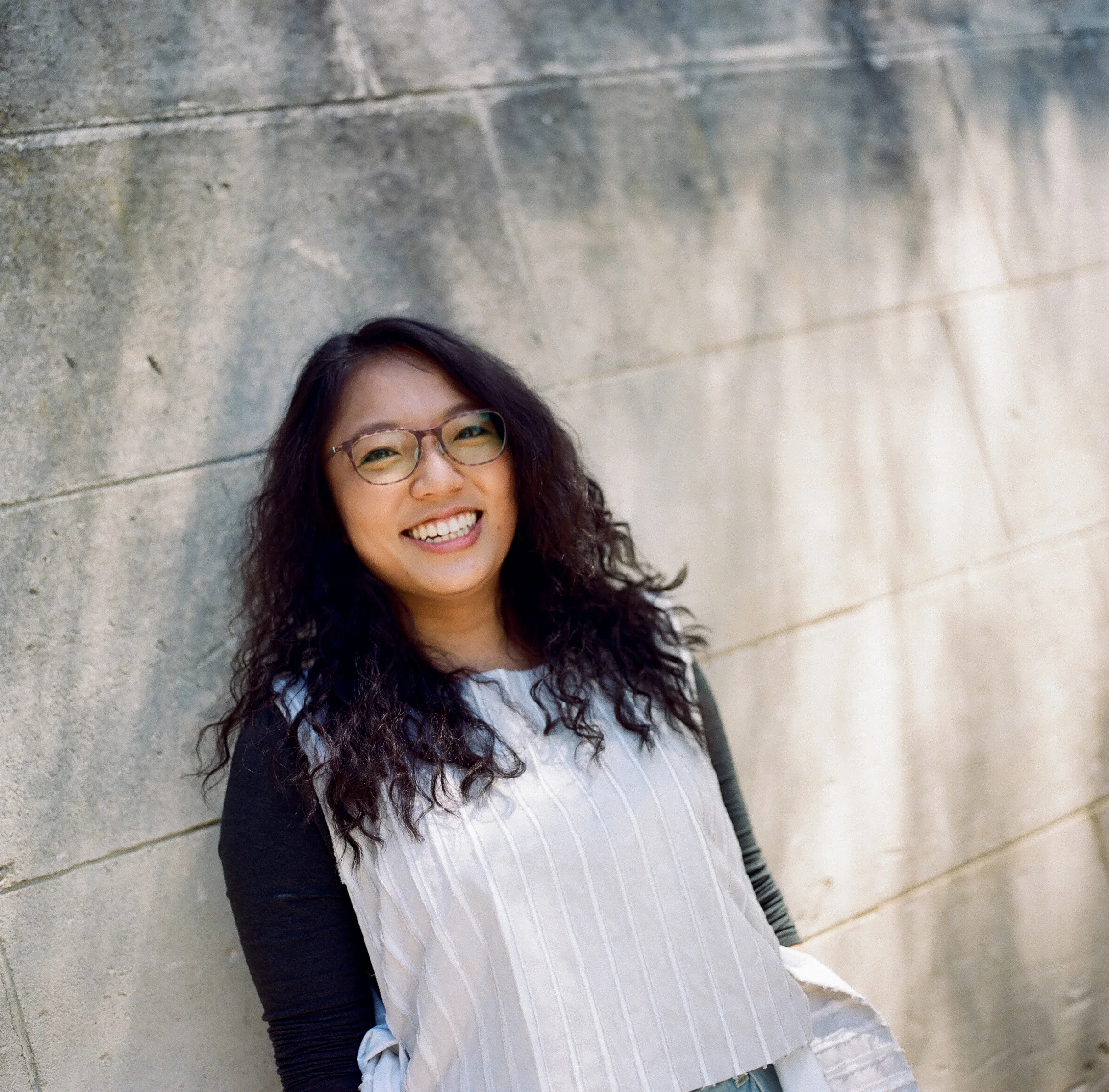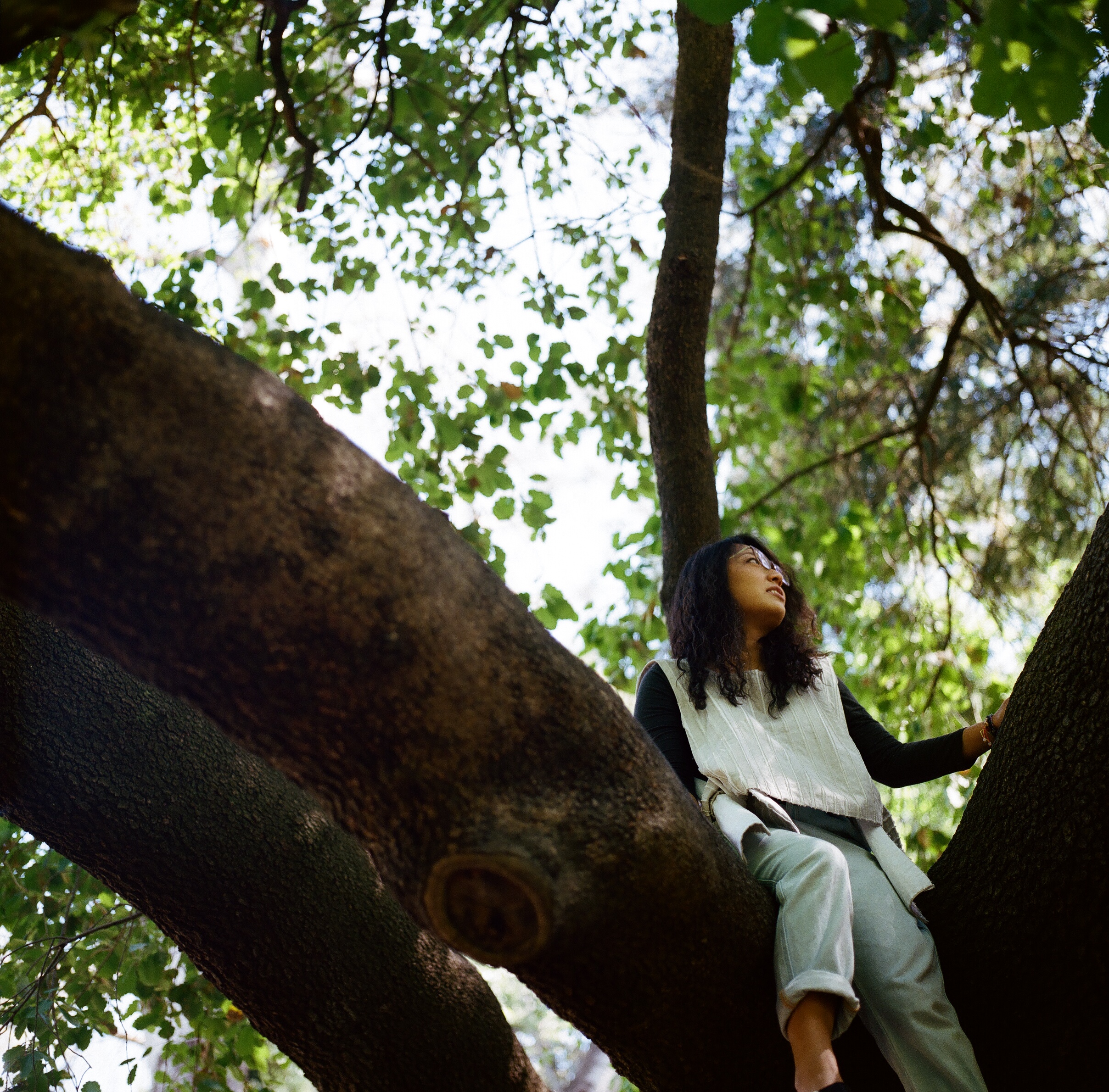Interview #37 — Yumemi Hiraki
Yumemi Hiraki is a Melbourne-based artist born and raised in Hiroshima. After completing her Bachelor of Fine Arts (BFA) at the Victorian College of the Arts, she continues to develop her practice while exhibiting in various galleries and Artist Run Initiatives around Victoria.
Yumemi explores tense relationships and subtle connotations of one as a resident of cultural gaps. Treating her practice as a personal study of life’s continuity and ephemerality, her works hint that perhaps our memories, and the way we withhold history is as dynamically transitional as this world that we all inhabit.
Yumemi speaks to Leah Jing McIntosh about working with glass, the intertwining of identity and art, and conceptions of ephemerality and fluidity within her practice.
This interview has been created in partnership with Mapping Melbourne. Yumemi will be showing 'Creases', alongside Pimpisa Tinpalit and Leah Jing in their exhibition 'Reflection' at No Vacancy, from December 5-17. Event here.
What were you studying at the Victorian College of the Arts, and how did it get you to this point?
I studied a Bachelor of Fine Arts, specialising in Sculpture and Spatial Practice. It was such an amazing experience where I was able to grow and develop my practice as an emerging artist. I think the most valuable thing I took from it is the importance of being both critical of your work, and standing by it with true confidence and trust. It’s a crucial and ever-shifting balance that I am still trying to constantly figure out. It can be scary being a lone artist in the big wide world, and I think this degree definitely threw me into the deep end, while softly nurturing my sense of belonging. And of course, introduced me to some truly amazing people and lifelong friends.
As a contemporary artist, do you feel pressured to be overtly political?
I think no matter what, each artist is always political. Whatever your work is about, whether it is a commentary on your surroundings, society, history, or yourself, the work is the artist’s statement and that is political. I don’t really feel pressured to be political per se, but I think inevitably, there are always hints to larger political and societal issues that arise within the layers of my installations.
Visiting your exhibition ‘Shall We Have Some Tea’, it felt to me like your creative practice is very much intertwined with your identity. Do you find perceive them to be related? Or perhaps: Can they ever be separated?
I believe they can never be separated. My artworks are the relations, reflections and interpretations of my identity at its core. It is evidently so in my work, as I explore my personal understanding of culture and heritage, but I think every artwork reflects an artist’s identity and personality. It’s an inevitable fact, as one’s practice is a reflection of you.
Can you take us through your creative process?
I don't necessarily have a certain process of working, but as a conceptual artist, I do what I feel is best to develop the work, and that guides my whole creative process. Sometimes I just experiment with materials and see what happens. Other times, I read, research or write long notes to myself that are mostly elaborate rants on my emotions. The process is always different but I think the key is to let the work guide you. Sometimes it may feel like there’s no light at the end of the tunnel, but you find that tiny spark, and it suddenly all falls into place.
Sometimes there is no light and you need to start searching in a different direction. It is all an ongoing learning process and you have to let yourself go to that. It is also essential to give yourself time to reflect on your own work, and receive critical feedback from peers or people you trust.
How do you keep your momentum?
Keeping up the momentum is definitely a challenge and I think you just have to find a way that works for you. Leaving art school and no longer having access to such support systems, it can be quite disorientating and hard to keep motivated. For me, the easiest way to continue creating was having upcoming deadlines such as exhibitions. It helped me through the transition from student to emerging artist, and gave me confidence to continue my practice. At the moment, I feel that I need to slow down a little and dedicate more time to research, read, experiment and gain experiences. Of course I will still be exhibiting, just less frequently so I can fully develop the concepts for each exhibit.
Your piece, ‘Come, in Land and See’ Is accompanied with the statement, ‘Perhaps history is a dynamic space / coming and going / disappearing and resurfacing’. How do conceptions of time inflect your art?
Life’s ephemerality and fluidity is a linear link that runs throughout my overall practice. Though history may remain in books and written accounts, perhaps it’s different in one’s mind and experience. I think that one’s personal memories of specific histories are transitional and only remain as glimpses of the reality. Perhaps your memory is like a slightly opened drawer; at times they shut and others open. In this way, I feel that memory and the way we withhold history is constantly in flux, we are just passersby navigating our bodies through an overwhelming universal cycle.
I have been working with glass to experiment how much I can push the material in my work. Though glass may often be solid and permanent, I also feel equally as strong, that it is highly fluid and malleable. It is a fragile material that is profoundly influenced by its environment. The way it interacts with light and shadow, the transparency and its undeniably convincing presence, it is all fascinating and I want to continue exploring these conceptual ties through this material.
Can you tell us more about 'Creases', which features in our upcoming exhibition at No Vacancy Gallery?
The exhibition will feature four glass blocks on individual metal stands, that have encompassed within, a piece of Obi silk (the sash that wraps around the waist when wearing traditional Kimonos).
The glass sculptures are created through a process of hot glass casting. So first, a layer of clear glass is poured into a mould and the Obi is placed on top. As the fabric burns up in flames, it is quickly encapsulated by the second pour of hot glass from above. The patterns, colours and bubbles that remain in the glass as a result, are the burnt remnants of the fabric, trapped within the glass surfaces.
The simplicity of this particular install will highlight the beauty of the elaborate, organic and completely unexpected universe that seemed to form as a result of this physical process.
What are you currently working on?
I am actually currently working on developing 'Creases' into a larger body of work that digs deeper into the conceptual and emotional elements that are embedded in these glass sculptures. This body of work is a personal relationship to heritage and tradition. I am refining ways of reflecting these thoughts in a more succinct and nuanced form.
This work was so significant and personal as it marked a sort of turning point, that allowed me to come to terms with my relationship to my culture. I felt guilty about my evidently shifting identity as I live and construct a life in an international realm. The process of cutting, burning and trapping such a significantly traditional and beautiful symbol of culture, somehow lifted some of the weight I seemed to be carrying around. Of course, these thoughts are something I am contemplating and will continue to contemplate on, but it began a healthy conversation that allowed me to somewhat reconcile my past and present.
I feel that my current display does reflect the beauty of the glass, however not necessarily all the turmoil and overloaded emotion that comes with this residual object. Hence, I feel the need to explore further into this specific artwork.
Though I always take a personal approach in my work, I feel that these thoughts are universal, especially in such a diverse and multi-cultural city like Melbourne. It is definitely a work in progress and I plan to dig deeper into this body of work and continue to explore these thoughts in future exhibits.
You’re a sculptor but also inhabit other artistic spheres; such as dance, performance art —how do you navigate these different parts of self? How do you bring them together? When do you know which medium is the right one?
I don’t necessarily see myself as a sculptor but more as a contemporary conceptual artist. My work takes a multi-disciplinary approach and I try not to limit myself to a specific material or medium. I guess we never really know what is right, and that is part of the experimentation. One work leads to another and another, and they may be an exploration of the same concept in different materials, different settings and different formats. I think as artists, we are always looking for the best outcome that conveys our concept in the most natural and coherent way, so testing in different spheres add necessary dialogue to our practices.
What can we expect next?
I hope for the near future to be a time where I can gain further experience and knowledge about the art industry. I want to learn and absorb the world and opportunities around me, while continuing to refine my practice further.
Do you have any advice for aspiring artists?
Don’t be afraid and don’t give up. I think the key is to keep moving forward. No matter how small and slow the step, it’s the continuation that counts. This effort will drive, ground and support you when it feels like it’s all too much. Don’t compare yourself and your practice to the people around you; your practice should be for you and there is no guideline or timeline for that, other than your own.
Who inspires you?
People that are honest to themselves and who they are.
How do you practice self-care?
Picnics, dogs, star-gazing, cooking, eating, watching daily 15 minute Japanese dramas.
What does being Asian-Australian mean to you?
Be yourself, be proud of where you come from, and allow yourself to reside in that gap.
Find out more
Interview and Photographs by Leah Jing McIntosh







